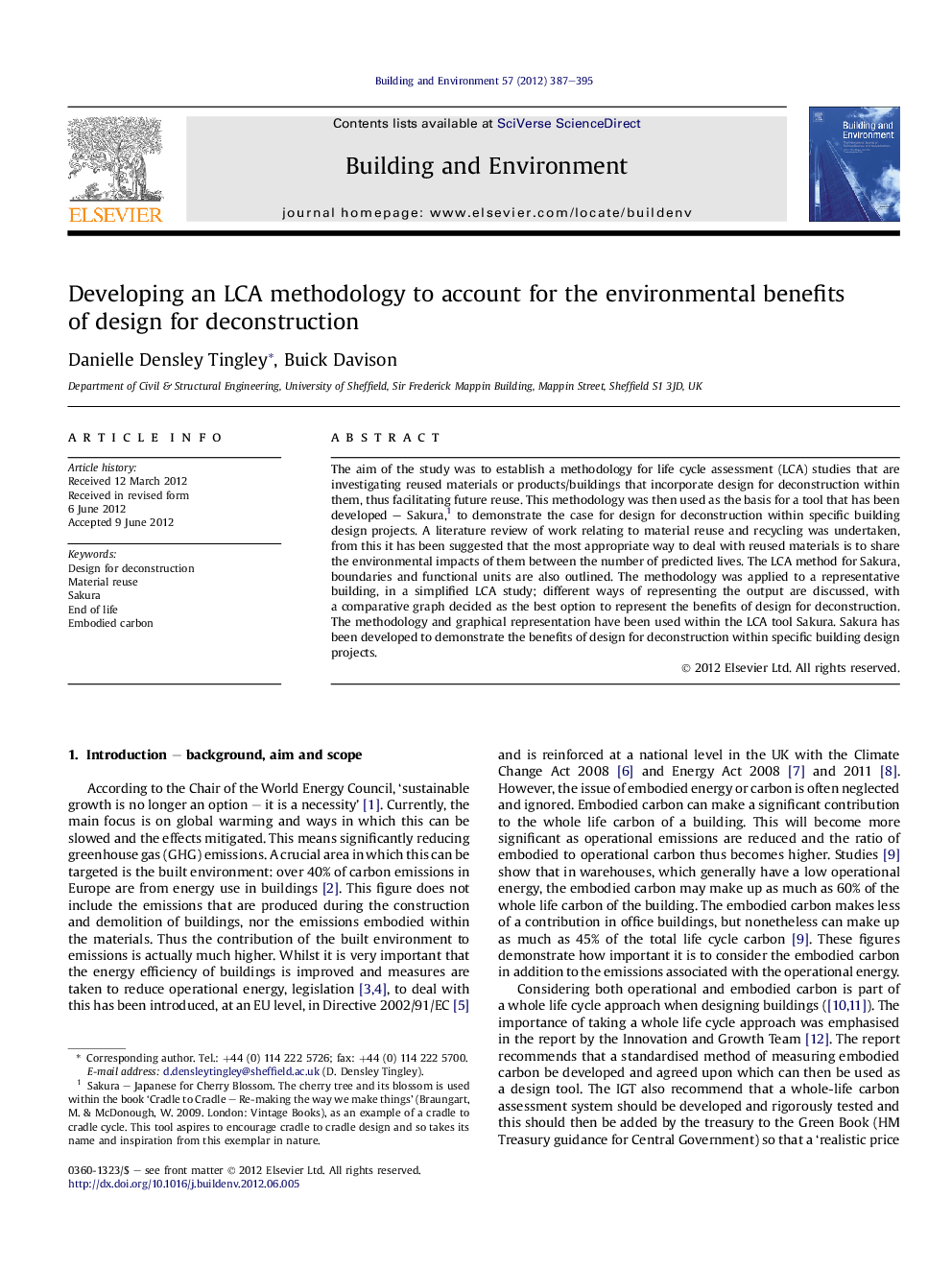| Article ID | Journal | Published Year | Pages | File Type |
|---|---|---|---|---|
| 248534 | Building and Environment | 2012 | 9 Pages |
The aim of the study was to establish a methodology for life cycle assessment (LCA) studies that are investigating reused materials or products/buildings that incorporate design for deconstruction within them, thus facilitating future reuse. This methodology was then used as the basis for a tool that has been developed – Sakura,1 to demonstrate the case for design for deconstruction within specific building design projects. A literature review of work relating to material reuse and recycling was undertaken, from this it has been suggested that the most appropriate way to deal with reused materials is to share the environmental impacts of them between the number of predicted lives. The LCA method for Sakura, boundaries and functional units are also outlined. The methodology was applied to a representative building, in a simplified LCA study; different ways of representing the output are discussed, with a comparative graph decided as the best option to represent the benefits of design for deconstruction. The methodology and graphical representation have been used within the LCA tool Sakura. Sakura has been developed to demonstrate the benefits of design for deconstruction within specific building design projects.
► Highlights the need to design for deconstruction i.e. consider end of life at design stage. ► Reviews methodologies for LCA of reused materials. ► Develops a methodology for use in buildings. ► Methodology is used as a basis for a simplified LCA tool – Sakura. ► Sakura quantifies environmental benefits of design for deconstruction and material reuse.
